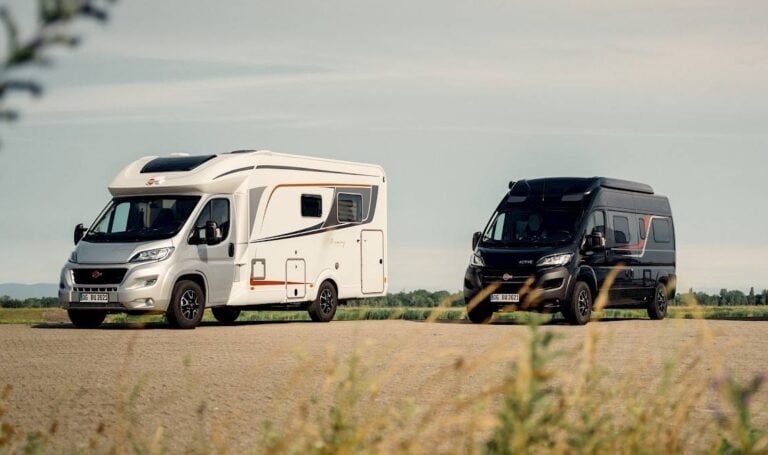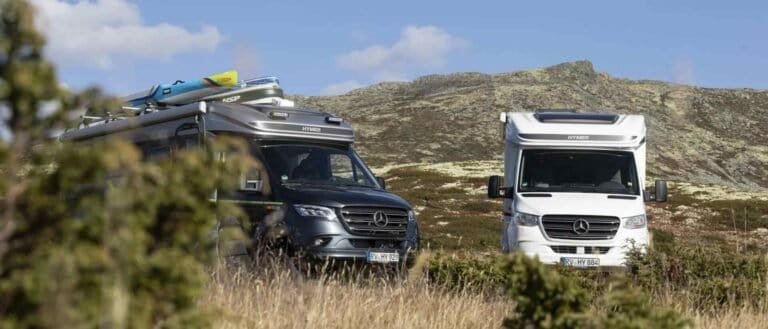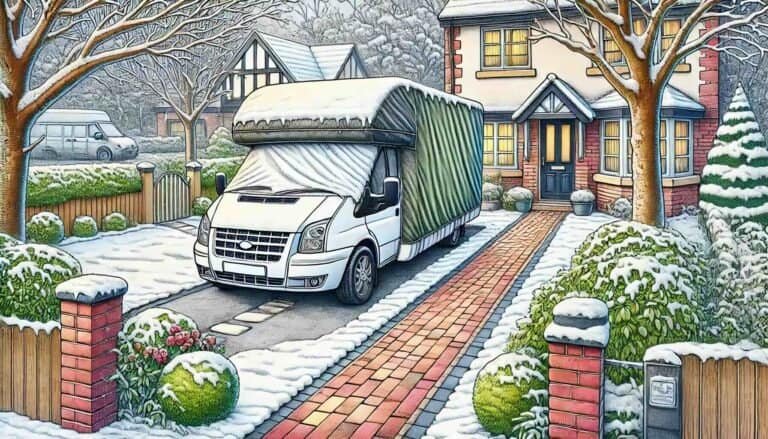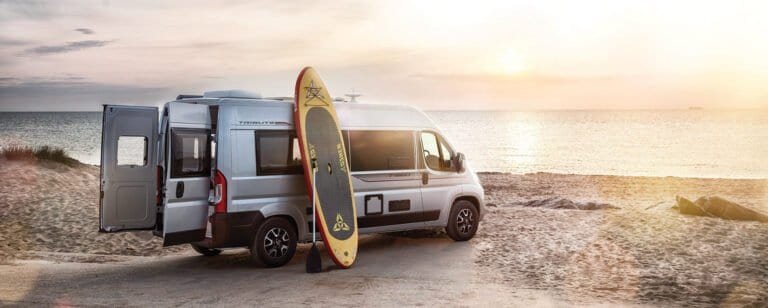Travelling in a campervan or motorhome offers a unique sense of freedom and adventure, allowing you to explore the great outdoors at your own pace. However, while it’s thrilling to hit the open road, safety should always be a top priority. Whether you’re a seasoned road warrior or a first-time motorhome traveller, being well-prepared can make a significant difference in your experience. This guide covers essential safety tips that every campervan and motorhome traveller should follow to ensure a safe and enjoyable trip. From pre-trip checks to campsite security and emergency preparedness, these tips will help you travel with peace of mind.
Pre-Trip Safety Checks
Before setting off on any journey, especially in a larger vehicle like a campervan or motorhome, it’s crucial to conduct thorough pre-trip safety checks. These checks ensure that your vehicle is roadworthy and that you’re well-prepared for any unexpected situations.
1. Check Your Vehicle Condition
A well-maintained motorhome or campervan is fundamental for safe travel. Before you start your journey, take the time to perform a comprehensive check of your vehicle’s condition:
- Tyre Condition and Pressure: Inspect all tyres for wear and tear, and ensure they are inflated to the recommended pressure levels. Don’t forget to check the spare tyre as well.
- Oil and Fluid Levels: Ensure that all fluid levels, including engine oil, coolant, brake fluid, and windshield washer fluid, are topped up and within the recommended ranges.
- Brakes and Lights: Test the brakes for responsiveness and make sure all lights (headlights, brake lights, indicators) are functioning correctly.
- Battery Health: Check the battery terminals for any corrosion and ensure it is fully charged, particularly if your motorhome has been in storage for a while.
- Windows and Mirrors: Clean all windows and mirrors to ensure maximum visibility, and make sure they are not damaged or cracked.
For those planning to travel during colder months, it’s essential to prepare your vehicle appropriately for winter conditions. You can refer to our comprehensive guide on how to winterise your motorhome to ensure your vehicle is ready for the challenges of winter travel.
2. Emergency Kit Essentials
An emergency kit is a must-have for any motorhome or campervan journey. You never know when you might need a tool or first aid supply, so being prepared is key:
- First Aid Kit: A comprehensive first aid kit should include bandages, antiseptic wipes, pain relievers, tweezers, and any personal medications.
- Basic Tools: Include tools like a jack, lug wrench, pliers, a multi-tool, and duct tape for minor repairs.
- Jump Leads and Spare Parts: Keep jump leads and essential spare parts, such as bulbs and fuses, on hand.
- Fire Extinguisher: Ensure you have a working fire extinguisher suitable for vehicle use, and know how to use it.
- Warning Triangles and Hi-Vis Vests: These are essential for making your vehicle visible in case of a breakdown.
- Torch and Spare Batteries: A torch is vital for visibility at night or in dark conditions, along with extra batteries or a hand-crank torch.
3. Plan Your Route Carefully
Having a well-thought-out travel plan is not just about convenience; it’s about safety. Before you set off, take the time to plan your route:
- Avoid Narrow Roads: Some roads may be unsuitable for larger vehicles like motorhomes or campervans. Use apps and navigation systems that cater specifically to these vehicles to avoid narrow lanes or low bridges.
- Know Where to Refuel and Rest: Identify fuel stations and rest stops along your route to avoid running low on fuel or driving fatigue.
- Have Alternative Routes: Weather, roadworks, or accidents can cause unexpected delays. Having an alternative route prepared can save time and reduce stress.
By taking these steps before you set off, you are setting yourself up for a smoother, safer journey. A little preparation goes a long way in ensuring that your adventure is memorable for all the right reasons.
Safety While Driving
When travelling in a campervan or motorhome, driving safety is paramount. Unlike a regular car, a motorhome’s size, weight, and handling require extra care and attention on the road. Here are some essential driving safety tips to keep in mind:
1. Adjust Your Driving for the Vehicle Size
Motorhomes and campervans are significantly larger and heavier than typical cars, affecting their manoeuvrability and stopping distance. Therefore, adjusting your driving style is essential:
- Take Corners Slowly: Larger vehicles have a higher centre of gravity, making them more prone to tipping. Approach corners slowly and cautiously.
- Leave More Space: Maintain a larger distance between you and the vehicle in front, as heavier vehicles take longer to stop.
- Be Aware of Height and Width Restrictions: Pay attention to signs indicating height or width restrictions, especially in rural or older towns with narrow roads and low bridges.
- Use Mirrors Effectively: Large vehicles have bigger blind spots. Make use of wide-angle mirrors and check them frequently, especially when changing lanes or reversing.
2. Adhere to Speed Limits and Road Signs
While it may be tempting to keep up with regular traffic, remember that speed limits for motorhomes and campervans may differ from those for smaller vehicles. Here’s what to keep in mind:
- Follow Specific Speed Limits: Motorhomes are often subject to different speed limits than cars, particularly on dual carriageways and motorways. Always check the specific speed limit for your vehicle type.
- Respect Road Signs and Warnings: Keep an eye on signs that indicate sharp bends, steep inclines, or narrow roads ahead. These are crucial for safely navigating larger vehicles.
- Adjust for Weather Conditions: Rain, fog, and high winds can make driving a motorhome more challenging. Reduce your speed and increase your following distance in adverse weather conditions.
3. Take Regular Breaks to Avoid Fatigue
Driving a larger vehicle can be more mentally and physically taxing than driving a standard car, making fatigue a real safety risk:
- Schedule Regular Rest Stops: Plan to stop every two hours to stretch, hydrate, and rest. This not only helps prevent fatigue but also keeps you alert on the road.
- Share the Driving Load: If possible, switch drivers regularly to avoid burnout. Two well-rested drivers are better than one fatigued driver.
- Stay Hydrated and Nourished: Keep water and snacks easily accessible to stay energised, but avoid heavy meals that might make you drowsy.
Safety at Campsites
When you’ve reached your campsite, ensuring a safe and secure environment is vital for a relaxing stay. From selecting the right campsite to protecting your campervan and belongings, here are key safety practices to consider:
1. Choose a Safe and Legal Campsite
Not all campsites are created equal, and parking in unauthorised or unsafe areas can pose significant risks:
- Research Campsite Facilities: Look for campsites that are well-reviewed and offer good facilities, such as security measures, proper lighting, and regulated entry points. Reading reviews from other campers can provide insights into the site’s safety standards.
- Check Local Regulations: Make sure the campsite is authorised for overnight parking. Some regions have strict rules about where campervans and motorhomes can stay overnight, and violating these rules could result in fines or other penalties.
- Avoid Isolated Locations: While it may be tempting to camp in remote, picturesque spots, these areas may lack proper security and emergency services. Opt for well-established campsites, especially if you’re new to campervanning.
2. Secure Your Vehicle and Belongings
Keeping your campervan and possessions safe is essential, particularly when you’re away from your vehicle or asleep:
- Lock Up When You Leave: Always lock your doors and windows, even if you’re only stepping away for a short time. Use additional locks or security bars for extra protection.
- Install an Alarm System: Consider installing an alarm system or motion sensors to deter potential intruders. Some systems can alert you via your phone if there’s any unusual activity.
- Don’t Leave Valuables Visible: Keep valuable items like electronics, wallets, and keys out of sight to avoid tempting thieves. Use lockable compartments or safes inside the motorhome if possible.
- Use Wheel Clamps and Steering Locks: These physical deterrents make it more challenging for thieves to drive off with your vehicle. They are particularly useful if you’re parking in less secure locations.
3. Know Your Surroundings
Being aware of the environment and potential hazards around your campsite is a crucial aspect of safety:
- Stay Informed About Weather Conditions: Be aware of local weather forecasts and prepare for sudden changes. High winds, heavy rain, or extreme temperatures can pose risks when camping.
- Be Cautious with Wildlife: If camping in areas where wildlife is common, store food securely and avoid leaving it outside. Wild animals can be dangerous and are attracted to easily accessible food.
- Understand Local Hazards: Familiarise yourself with local terrain and any potential hazards like cliffs, rivers, or unstable ground. Avoid parking too close to water sources that could rise unexpectedly or soft ground where you could get stuck.
By taking these steps to secure your vehicle and be aware of your surroundings, you’ll help ensure that your camping experience is both safe and enjoyable.
Fire and Carbon Monoxide Safety
Fire and carbon monoxide are significant risks when travelling in a motorhome or campervan. Ensuring you have the right safety measures in place can prevent potentially life-threatening situations.
1. Install Smoke and Carbon Monoxide Detectors
Smoke and carbon monoxide detectors are essential safety devices for any campervan or motorhome:
- Choose Reliable Detectors: Invest in high-quality smoke and carbon monoxide detectors designed specifically for use in motorhomes. Some units can combine smoke, heat, and CO detection for comprehensive coverage.
- Test Regularly and Change Batteries: Make it a habit to test detectors before each trip and change the batteries regularly to ensure they are in working order. Many experts recommend replacing batteries every six months.
- Positioning Matters: Install detectors in the sleeping area and near any gas appliances, such as stoves or heaters, to detect smoke or carbon monoxide early.
2. Proper Use of Gas and Electric Equipment
Improper use of gas and electric equipment is one of the leading causes of fires in campervans and motorhomes. Here are some essential safety tips:
- Check Gas Appliances and Connections: Regularly inspect gas appliances like stoves, heaters, and fridges for leaks or faults. A gas leak can be extremely dangerous, so ensure all connections are secure and appliances are in good working order.
- Ventilation is Key: Always ensure proper ventilation when using gas appliances inside the vehicle. Poor ventilation can lead to a build-up of carbon monoxide, which is odourless and highly toxic.
- Switch Off When Not in Use: Turn off gas cylinders and electric appliances when not in use, especially before going to bed or leaving the vehicle. This reduces the risk of accidental fires or gas leaks.
3. Have a Fire Extinguisher Ready
A fire extinguisher is an essential piece of safety equipment that every campervan or motorhome should have:
- Choose the Right Type: Not all fire extinguishers are suitable for use in a campervan. Look for a compact, multi-purpose extinguisher that can handle different types of fires, such as Class A (wood, paper), B (flammable liquids), and C (electrical equipment).
- Know How to Use It: Familiarise yourself with how to operate the extinguisher. In an emergency, quick and confident use can prevent a small fire from becoming a major hazard.
- Regular Maintenance: Ensure the fire extinguisher is regularly serviced and checked for expiration dates to ensure it’s ready when needed.
Health and Emergency Preparedness
Being prepared for health issues and emergencies is critical when travelling in remote or unfamiliar locations. Here are key steps to ensure you’re ready for any situation.
1. Know Basic First Aid
A good understanding of basic first aid can make a huge difference in an emergency situation:
- Take a First Aid Course: Consider taking a basic first aid course to familiarise yourself with CPR, wound care, and treating burns or fractures. Courses are often available through local community centres or online.
- Pack a Comprehensive First Aid Kit: Your kit should include bandages, antiseptic wipes, pain relievers, tweezers, and any personal medications. Make sure it’s easily accessible and regularly check it to replace used or expired items.
2. Keep Emergency Contacts Handy
Having emergency contacts readily available can be a lifesaver in a crisis:
- Create a List of Key Contacts: Include local emergency services, a roadside assistance provider, and a friend or family member who knows your itinerary.
- Keep Contacts in Multiple Locations: Have a printed copy of these contacts in an accessible place in your vehicle, as well as a digital copy on your phone or GPS device.
3. Stay Connected and Informed
Staying updated on weather conditions, road alerts, and local emergencies can help you avoid trouble:
- Use Navigation and Safety Apps: Apps like Google Maps, Waze, or specialised motorhome navigation apps can provide real-time traffic and road condition updates.
- Monitor Weather and Alerts: Stay tuned to local weather channels and alerts to avoid severe weather conditions that could affect your travel plans.
By taking these precautions and being prepared for any situation, you can enjoy a safer, more enjoyable motorhome or campervan adventure.
Conclusion
Safety is the cornerstone of any successful campervan or motorhome adventure. By taking the time to prepare before your trip, driving cautiously, securing your campsite, and being prepared for emergencies, you can minimise risks and focus on enjoying your journey. Whether you’re a seasoned motorhome enthusiast or new to this form of travel, following these safety tips will help ensure a smooth, worry-free experience. Remember, a little preparation goes a long way in creating unforgettable memories on the road.
For those planning trips during the colder months, don’t forget to check out our guide on how to winterise your motorhome to ensure your vehicle is ready for winter travel.
FAQs
- What should I include in a campervan emergency kit?
A campervan emergency kit should include a first aid kit, basic tools like a jack and lug wrench, jump leads, spare parts (such as bulbs and fuses), a fire extinguisher, warning triangles, hi-vis vests, and a torch with spare batteries. These items can help you manage minor repairs and stay safe in case of breakdowns or accidents. - How do I prevent carbon monoxide poisoning in a motorhome?
Preventing carbon monoxide poisoning involves installing a reliable carbon monoxide detector near sleeping areas and gas appliances, ensuring proper ventilation when using gas-powered equipment, and regularly checking for leaks in gas connections. Always switch off gas appliances when they are not in use. - What are the best apps for route planning and safety alerts?
Apps like Google Maps, Waze, and CamperContact are excellent for route planning and providing real-time traffic updates. For safety alerts and camping-specific information, consider apps like Park4Night or AllStays, which provide details on campsites, road restrictions, and nearby facilities. - How often should I check my motorhome’s tyres and brakes?
Tyres and brakes should be checked before every trip. Ensure tyres are in good condition with proper tread depth and that they are inflated to the recommended pressure. Brakes should be inspected for responsiveness, and any unusual sounds or sensations should be addressed by a professional. - Can I park my campervan anywhere overnight?
No, you cannot park your campervan just anywhere overnight. Many countries have laws and regulations governing where campervans can park. It’s essential to check local laws and choose designated campsites or motorhome parking areas to avoid fines or other issues. - What are the essential safety devices for campervans?
Essential safety devices for campervans include smoke and carbon monoxide detectors, fire extinguishers, a reliable GPS or navigation system, wheel clamps, steering locks, and a first aid kit. Installing a security alarm system can also provide extra peace of mind. - How do I keep my campervan secure at a campsite?
To keep your campervan secure, always lock doors and windows when leaving the vehicle or going to bed. Use additional security measures like wheel clamps and steering locks. Avoid leaving valuables visible and consider installing an alarm system for added protection. - What are the common mistakes new motorhome owners make regarding safety?
Common mistakes include failing to conduct regular maintenance checks, neglecting to plan routes that accommodate the vehicle size, not securing loose items inside the motorhome, ignoring the need for carbon monoxide detectors, and underestimating the importance of insurance and breakdown cover. - How can I prepare for driving in different weather conditions?
Preparing for driving in various weather conditions involves ensuring your motorhome is in good condition (tyres, brakes, lights), checking weather forecasts frequently, and having equipment like snow chains, de-icer, and additional blankets. Adjust your driving speed and following distance according to the weather. - Is breakdown cover necessary for campervan travel?
Yes, breakdown cover is highly recommended for campervan travel. It provides peace of mind knowing you have support in case of mechanical failure, flat tyres, or other issues that could leave you stranded. Choose a cover that includes roadside assistance and recovery options suitable for larger vehicles like motorhomes.









